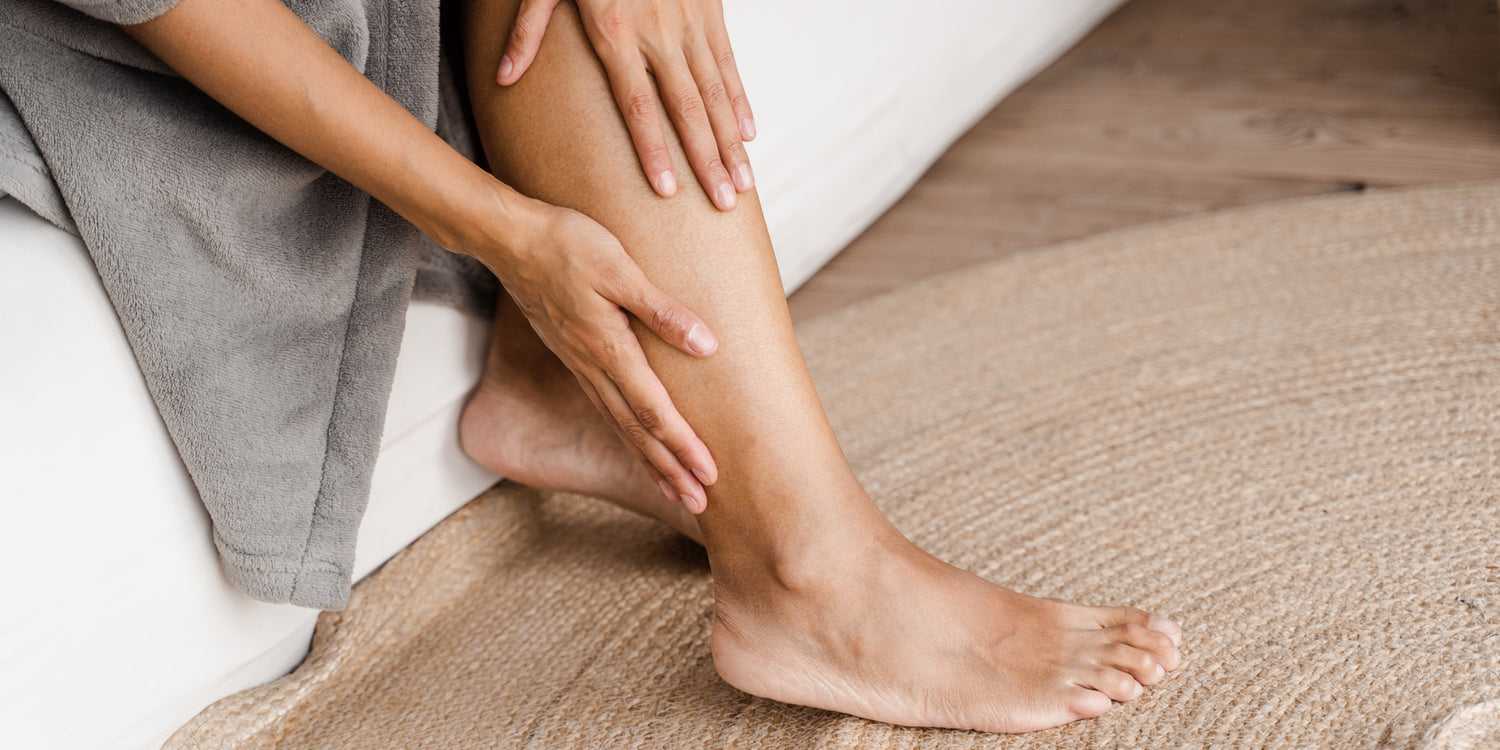Poor leg circulation can cause a range of uncomfortable symptoms, from tingling and numbness to cramps and swelling. If you've been noticing these issues in your legs, it's understandable to feel concerned. Fortunately, there are some simple self-evaluation techniques you can try at home to get a better sense of your leg circulation.
So, here are five self-evaluation tips that can help you identify potential circulation problems in your legs. From slower wound healing to leg cramps, these tips will give you a better understanding of your circulatory health. We'll also provide guidance on when it may be time to consult a doctor about your leg circulation concerns.
Hopefully, you'll have a better idea of what's going on with your leg circulation and some actionable steps you can take to address any issues.
What is Poor Leg Circulation?

Poor leg circulation refers to a condition where there is inadequate blood flow to the lower limbs, leading to various discomforts and potential health complications. It occurs when the blood vessels in the legs become narrow or blocked, hindering the efficient transport of oxygen and nutrients to the muscles and tissues.
Symptoms of poor leg circulation may include leg pain or cramping, swelling, numbness or tingling, and the development of ulcers or sores that are slow to heal. It is important to address poor leg circulation promptly, as it can lead to more serious complications, including tissue damage, infection, or even amputation. Treatment options may involve lifestyle changes, such as regular exercise and maintaining a healthy weight, as well as medication or surgical interventions to manage the underlying causes and improve blood flow to the legs.
Why Does Poor Leg Circulation Happen?
Poor leg circulation can be caused by several factors, including atherosclerosis, peripheral artery disease (PAD), and venous insufficiency. Atherosclerosis, a condition where the arteries become narrowed and hardened due to plaque buildup, is a major contributor to poor leg circulation. Plaque buildup restricts blood flow and oxygen supply to the legs, leading to symptoms such as pain, swelling, and slow healing.
Peripheral artery disease is another common cause of poor leg circulation. It occurs when the arteries that supply blood to the legs become narrow or blocked due to fatty deposits. As a result, blood flow to the legs is reduced, and symptoms such as leg pain, cramping, and weakness may occur. The reduced blood flow also impairs the healing process, making wounds or injuries in the legs take longer to heal.
Venous insufficiency is a condition where the veins in the legs struggle to effectively return blood back to the heart. This can be caused by damaged valves in the veins, leading to blood pooling in the legs. The pooling of blood increases pressure in the veins and can cause symptoms such as leg swelling, aching, and ulcers.
5 Tips to Determine if You Have Poor Leg Circulation

Poor leg circulation can be a cause for concern as it may indicate underlying health issues. Recognizing the signs and symptoms of poor leg circulation is crucial in order to address the problem promptly. Here are 5 tips to determine if you have poor leg circulation:
Frequent leg cramps, particularly at night or during exercise, can be a sign of poor circulation. Additionally, a tingling, numb, or heavy feeling in the legs may also indicate reduced blood flow.
Poor circulation can cause visible changes in the skin of your legs. The skin may appear pale, bluish, or reddish, especially when your legs are hanging down.
Another potential sign of reduced blood flow is if one of your legs feels significantly colder than the other. This temperature difference can suggest uneven circulation in your legs.
Slow healing of cuts, scrapes, or sores on the legs can also be a symptom of inadequate blood circulation. The body relies on proper circulation to deliver the necessary nutrients and oxygen for wound healing.
Finally, swelling in the legs, ankles, and feet, and the appearance of varicose veins, can suggest underlying circulatory problems.
If you notice any of these signs, it's important to speak with your healthcare provider. They can perform tests to diagnose the cause of your poor leg circulation and recommend appropriate treatment options.
Why Is It Important to Recognize the Symptoms of Poor Leg Circulation?
Recognizing the symptoms of poor leg circulation is crucial for several reasons. Firstly, poor leg circulation can lead to life-threatening conditions if left untreated. Reduced blood flow in the legs can result in the formation of blood clots, which can travel to vital organs like the heart or lungs, causing heart attacks or pulmonary embolisms. Therefore, early recognition of the symptoms is vital for immediate medical intervention to prevent life-threatening situations.
Moreover, poor leg circulation can impair healing and cause significant discomfort. Inadequate blood flow hinders the supply of oxygen and nutrients to the affected area, slowing down the healing process. This can lead to the development of non-healing wounds or ulcers, which can become infected, causing further complications. Additionally, poor circulation can result in continuous fatigue and pain in the legs, making it difficult for individuals to perform daily activities and negatively impacting their quality of life.
Not addressing the symptoms of poor leg circulation can have severe consequences. The lack of adequate blood flow to the legs can eventually affect major organs and systems throughout the body. When blood circulation is compromised, it can lead to an increased risk of hypertension, which strains the heart and can lead to cardiovascular diseases. Furthermore, interrupted blood flow can also affect the kidneys, impairing their function and potentially leading to kidney diseases or failure.
When Should You Get Medical Advice When Experiencing Poor Leg Circulation?

Common symptoms of poor leg circulation include leg pain, cramps, numbness or tingling sensation in the legs, and swelling in the feet and ankles. Individuals experiencing these symptoms should seek medical attention as it could indicate an underlying health issue that needs proper diagnosis and treatment.
Medical advice is essential when experiencing symptoms of poor leg circulation because early intervention can help prevent complications and improve overall health. Delaying medical consultation can lead to severe consequences such as deep vein thrombosis (DVT), where blood clots form in the legs and can potentially travel to vital organs. Untreated leg circulation problems can also result in leg ulcers that are slow-healing and prone to infection. In some cases, untreated symptoms can even lead to tissue damage, gangrene, and the need for amputation.
Certain risk factors contribute to the development of poor leg circulation, including obesity, smoking, diabetes, high blood pressure, high cholesterol levels, and a sedentary lifestyle. It is important to recognize these risk factors and seek medical advice promptly, as the consequences of leaving symptoms untreated can be detrimental. Emerging symptoms of poor leg circulation should never be ignored, and seeking medical advice promptly can improve the chances of successful treatment and prevention of further complications.
Takeaway
Poor leg circulation can cause a range of uncomfortable and potentially serious symptoms that should not be ignored. By being aware of the common signs, such as leg cramps, skin discoloration, temperature changes, slow wound healing, and swelling, individuals can better identify potential circulation issues. Recognizing these symptoms early and seeking medical advice is crucial, as poor leg circulation can lead to more severe complications if left untreated.
With proper diagnosis and management, whether through lifestyle changes, medications, or medical procedures, many of the negative effects of poor leg circulation can be addressed and prevented. Taking proactive steps to evaluate and address leg circulation concerns can go a long way in maintaining overall health and wellbeing.
Renpho Health Tips
-

From Desk Job to Bliss: How Compression Massage Benefits Office Workers
May 14, 2024
Read more >
-

Embrace the Season: Discover the Magic of Autumn Essential Oils
April 8, 2024
Read more >
-

Joint Ventures: A Guide to Joint Pain-Soothing Foods
April 2, 2024
Read more >
-

Easing the Ache Down Under: The Guide to Massage Guns for Chronic Pain Relief
March 20, 2024
Read more >
-

The Connection Between Massage Guns and Better Sleep
May 23, 2023
Read more >

